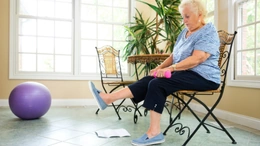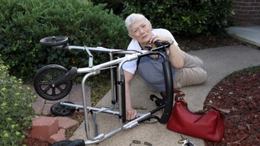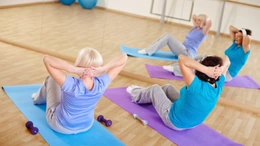How To Choose Between Standard, Rollator, And Folding Walkers For Seniors

Walkers are highly important as a senior advances in age because mobility becomes more restricted, and they need aids to help them continue being active, independent, and safe.
Not all walkers are identical, though, and the best walker option will rely on the user, his or her physical requirements, general lifestyle, and surroundings.
They differ significantly in terms of benefits, whether they are a simple frame, a wheeled rollator, or designed for easy transportation. With the right choice of walker, the risk of falls becomes less, fatigue is reduced, and the quality of life is enhanced.
The following article discusses the main differences between standard, rollator, and folding walkers and provides some advice on the choice of the most suitable walkers for seniors to use in the long run.
Understanding The Types Of Walkers Suitable For Seniors
Walkers vary in many ways, and the initial step is to know their structure and how they work to make an appropriate selection.
Standard Walker
A typical walker consists of a simple four-legged frame having no wheels attached. It is the most supportive and stable one, and it is perfect when a person needs great assistance during walking or after a surgery, e.g., when it needs to be done by seniors.
It needs sufficient upper body strength because you need to lift and shift it every step of the way, so it is convenient to take it over a short distance or use it indoors.
Rollator Walker
A walker with three or four wheels, sometimes having a built-in seat and braked by hand, is called a rollator. It is aimed at more active seniors who are able to walk steadily with some assistance now and then.
They roll and can be used without lifting up the wheels, and the seat is handy to rest on. Rollators can be used outdoors and when travelling long distances, but they are not suitable for people with serious balance problems.
Folding Walker
Folding walkers are found in most cases as a normal model that can be folded to be stored or carried. Some have two front wheels to make it easier to maneuver.
They are perfect with older people who tend to travel or stay in smaller living places. They can provide the same kind of support as general walkers, but they are mobile, which increases their versatility.
All of the types fulfill different requirements, and it is essential to get a clear idea about the disparities and, thereby, notice the accidents or enhance the daily comfort.
How To Choose The Right Walker For Senior Needs
Here are the factors you need to consider when choosing the right walker for senior’s needs:
Assess The Level Of Mobility Support Required
Begin by assessing the physical well-being of a user. The elderly with restricted strength or who are already recuperating from surgery might require the pillars of a normal walker.
They provide great stable support and may be exhausting to make use of since one will have to lift them with individual steps.
Rollators are more effective in cases when the patient only requires assistance in walking in areas with light balance requirements or when they have to walk longer distances.
The wheels enable constant movement and prevent body stress, but the person should have excellent coordination and grip to operate the hand brakes.
For seniors with minor movements and requiring some assistance, a folding walker with front wheels may offer the ideal blend of support and comfort.
Evaluate Indoor And Outdoor Use
The background that the walker will be operating in is very important.
- Standard walkers are more suitable for smooth surfaces indoors and on short paths. The bigger size, whether it is wheels or brakes, makes them more suited to being used outside or on shopping trips or in parks.
- Folding walkers are general-purpose in either of the two settings and for cases where mobility and storage of the walkers matter.
- Folding walkers can be more convenient in case the doorways of the house are narrow, the turns are narrow, or there are stairs.
Check For Portability And Storage Needs
Portability is very important to seniors who travel or have to go to regular appointments. The most compact are folding walkers, and they can easily be stowed in the car or closet, while also being lightweight.
Rollators are not the only ones that fold, but some are bulkier and might not accommodate small places. Typically, standard walkers occupy a larger area of space and may not fold, hence not the best option when a patient requires flexibility.
Assess the location and positioning of the storage of the walker when it is not in use. The folding models usually suit the seniors who stay in apartments or those who have caregivers who help them transport.
Consider Strength, Endurance, And Balance
The type of walker will also require various physical capabilities. Standard walkers are harder to manipulate with arm strength, and more effort is required to use them on longer walks.
Rollators are easier to push, but they necessitate the person using it to be alert, coordinated, and capable of using hand brakes. Depending on the wheel design and the weight, folding walkers can be between.
In case a senior becomes fatigued easily, a rollator with a seat might allow taking a rest. Nonetheless, when there is a chance of safety issues, such as a lack of the ability to control brakes, a regular walker can be safer.
To determine the type of mobility aid the senior may need, a physical therapist or an occupational therapist should be hired to assess the needs of the older adult and prescribe a type according to the balance and endurance tests.
Look For Features That Add Comfort And Safety
The modern walkers are available with different features to ensure that users are comfortable and will not be injured.
- Adjustable height to maintain a good posture and less burden on the back and shoulders
- Ergonomic handles with arthritic or gripping hands
- Longer use rollators with padding on the seats and backrests
- Baskets or purses of personal items, to make the walker more convenient
- Non-slip rubber ends or strong brakes with which to drive over various surfaces without risking falling on the ground
Always be keen to ensure that the frame is of stout yet lightweight material, such as aluminum, and be keen to test its stability before securing the purchase.
Conclusion
Selecting the appropriate walkers for seniors goes beyond the issue of mobility; it is about safety, comfort, and independence. Families can consider the activities and environment a user is in, their physical strength, and activity level, thus choosing a walker that indeed meets the needs of the elderly.






















